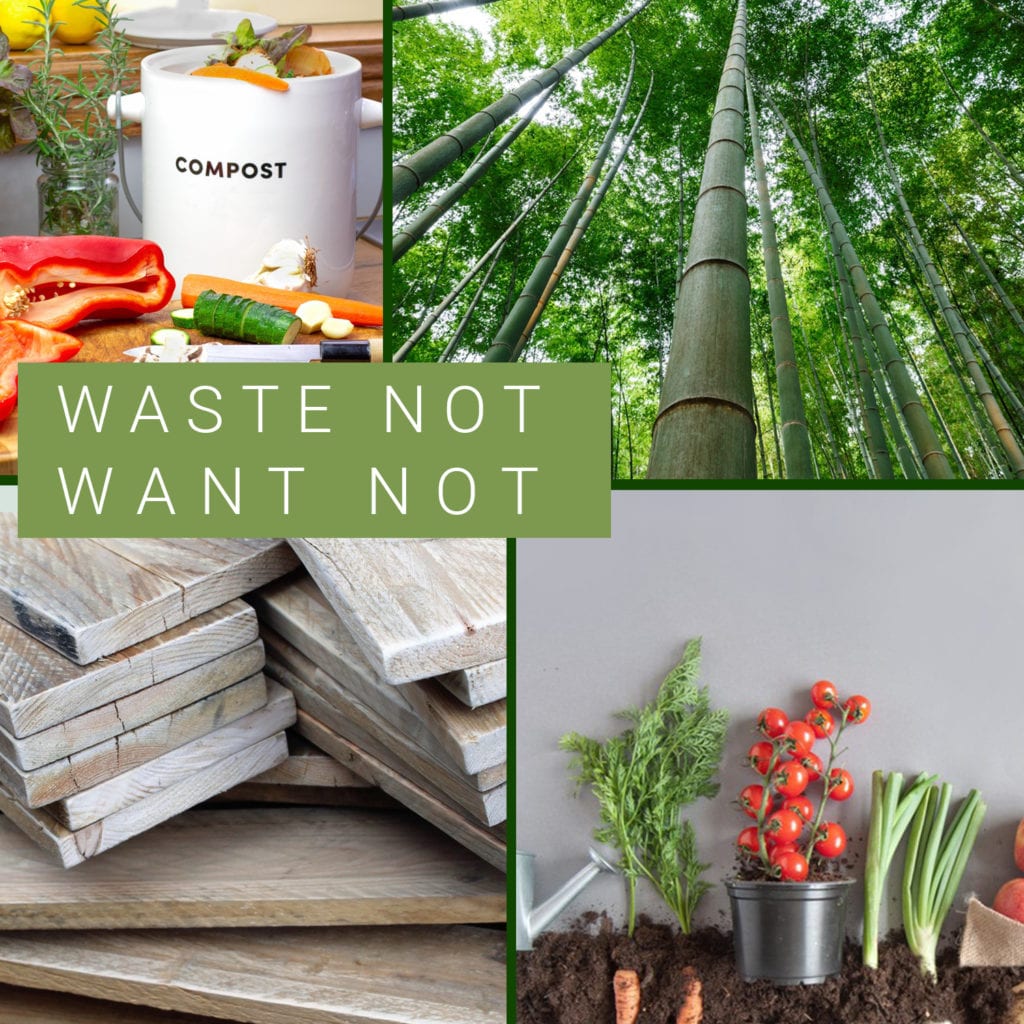Waste Not, Want Not
Kermit the Frog once proclaimed, “It’s not easy bein’ green”. Back in the late 18th century, when “Waste not, want not” first appeared in print, it probably wasn’t that easy to be fastidiously frugal. Nonetheless, it’s apparent that our ancestors believed in the wisdom of conserving resources, long before modern man began to debate the veracity of climate change. But regardless of which side of the global warming argument you subscribe to, I doubt many would deny the value in saving energy and being more mindful of our consumption habits. This month we turn to our Bilotta designers to learn their tips for making it easy to be green.

Senior designer Danielle Florie is truly committed to reducing her carbon footprint throughout her home, and each year she resolves to boost her efforts towards that end. I work with Danielle in our Mount Kisco showroom, and as a first-hand witness to some of her strategies, I have often thought that she truly should be committed. But no, it turns out she’s simply passionate about living green. (Totally unrelated to the fact that green is her favorite color.) Danielle most definitely walks the walk when it comes to “reduce, reuse, and recycle”.

She recycles every piece of plastic, glass, and paper in her house. She saves the inner waxed bags from cereal boxes because she feels they’re superior to non-recyclable plastic freezer bags. Lately she has even begun to take magazines from the office to deposit into her home recycling bins because she’s not confident in our building’s recycling program. We recently had a large hardware delivery in Mount Kisco that included an obscene amount of bubble wrap; Danielle saved it, found a woman on Facebook who, coincidentally, was in need of an obscene amount of bubble wrap, and drove to meet up with her to hand it over. (That was the one that really made me question her sanity!) She’s currently working on replacing her single pod coffeemaker in favor of a more environmentally responsible machine that doesn’t produce huge amounts of non-recyclable trash.
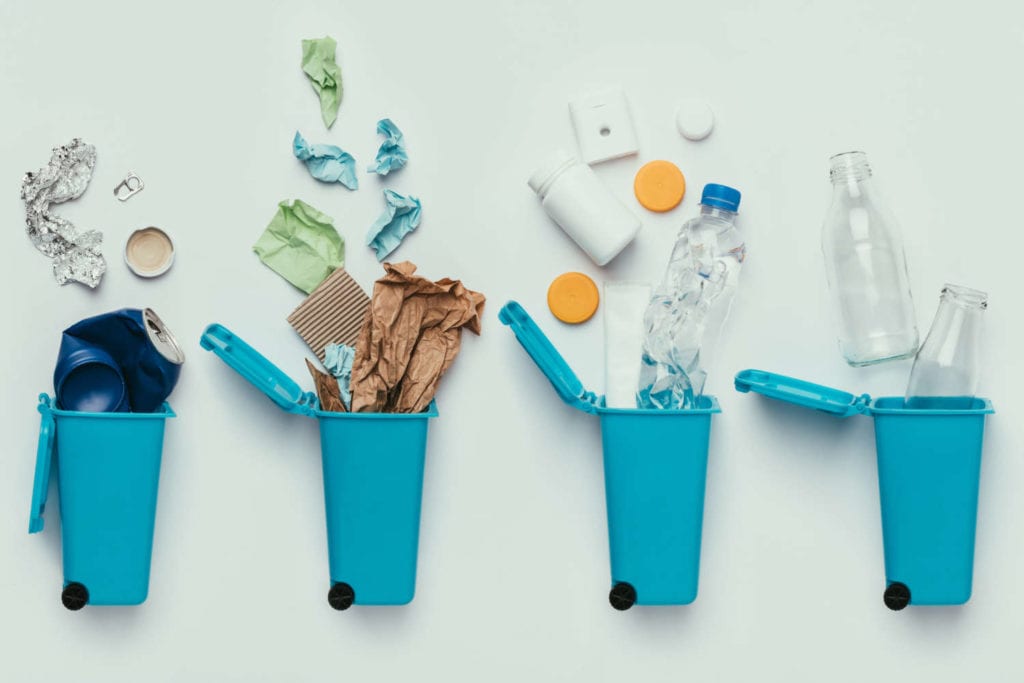
Even though Danielle likes an uncluttered space, she doesn’t throw anything away. Aside from day-to-day recycling, she purges her belongings at least four times a year and drops off bags of clothing and small household items to Goodwill.

At the heart of Danielle’s environmental philosophy is the conviction that we all should be aware of the green footprint of every item we purchase. Unfortunately, in today’s world of discount furniture and cabinetry stores, everything has become disposable. We seem to have forgotten that, at one time, furniture was made to last not just for years, but for generations. (Antiques, anyone?) Danielle has had several people say to her, “Oh, I remodeled my kitchen with cheap cabinets from a big box store. I figured I can always re-do it in five or six years”. Cabinets that only last five or six years end up in landfills, cluttering our open spaces and ruining our landscapes.
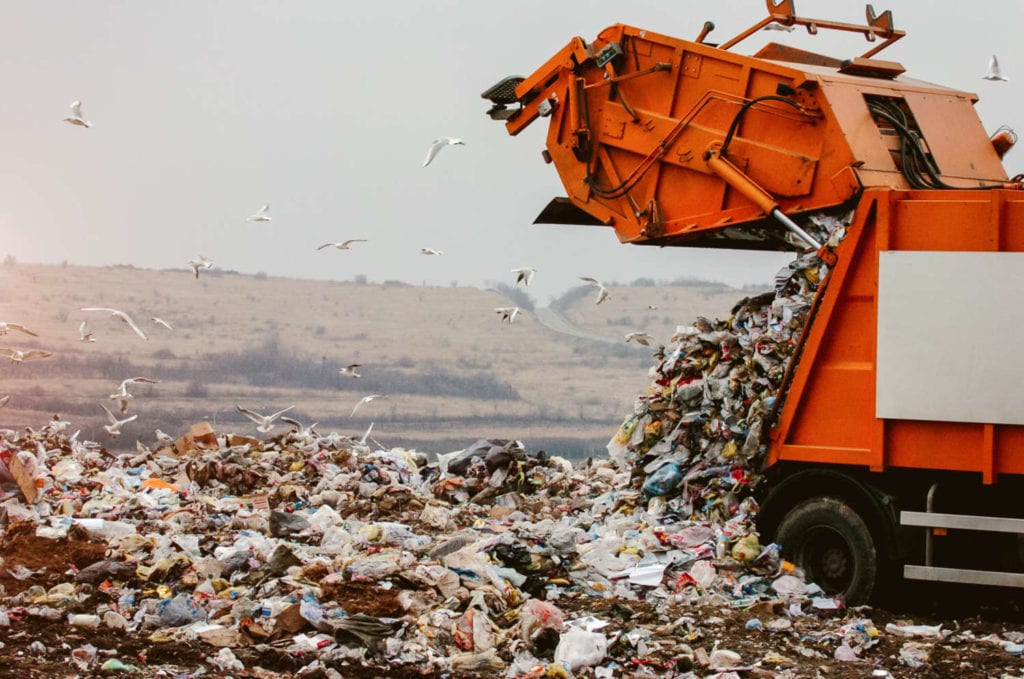
And lest you think that Danielle’s beliefs are self-serving because Bilotta sells high-quality cabinetry, think again. She loves to frequent estate sales and flea markets to discover pieces that she can re-purpose or refinish as gifts to family and friends, just so that she can save unwanted, unsightly, but otherwise serviceable finds from being added to landfills.

Cabinetry, countertops, appliances, etc., can take hundreds of years to decompose, if they decompose at all. So, if you’re remodeling, Danielle would urge you to see if someone else can use them (check out Facebook Marketplace, or ask your contractor if they know of anyone), or consider donating your kitchen to worthwhile charities such as Sustainability Angel. As a footnote (and only half-joking), Danielle conjectures that the paper we designers waste printing drawings, revisions, price quotes, orders, acknowledgements, appliance specs, etc., might just rival the volume of wood products used to actually manufacture your cabinets! Food for thought.

Several other designers echoed the concept of donating your old kitchen to Sustainability Angel, giving them to a friend, or even selling them on sites such as Craigslist, among them, senior designer Paula Greer. Paula also believes that, during the design process, planning for the collection of recyclables can go hand-in-hand with planning for the storage of pots and pans. Today’s cabinet accessories go a lot further than just the standard double trash pullout.

For instance, I recently had a customer for whom we planned a special pullout, complete with an in-cabinet electrical outlet, to house a paper shredder to handle her household’s junk mail and kid-generated paperwork output. Paula expanded on additional ideas for making your new kitchen more environmentally friendly. If you’ve chosen a powerful exhaust hood over that new professional range, make sure that your contractor provides for “make-up air” to compensate for the room air that’s being pulled out of the house. This can be a problem in our increasingly tight homes, as it can lead to pulling dangerous carbon monoxide into the room. (Many municipalities are now starting to require this.) Paula also suggests that, when selecting items for your project, make a conscious effort to choose materials that have low VOC’s. This pertains not only to cabinetry, but to countertops as well. There are now many new countertop materials that are also sustainable, including IceStone, PaperStone, Durat, and Eco by Cosentino.

And if you love the look of a wood top, you can’t get more sustainable than bamboo and reclaimed wood. Bamboo is actually a grass that can grow three feet in a single day, and the plant’s knuckles create an attractive pattern when fabricated into planks. And nothing tells a story like the richly worn patina of a piece of reclaimed wood.

Senior designer Tom Vecchio also loves the idea of re-using and re-purposing materials. When his customer put an addition onto their house, they saved the exterior wood siding instead of throwing it into the dumpster.

The unwanted siding got a second incarnation as stylish open shelving (supported by graceful iron brackets) in the remodeled kitchen.

Not only do they add character to the room, but they speak to the history of the home. What a fascinating conversation starter when they entertain in their new space.

On the subject of reclaimed wood, I have had two customers in the past year who have incorporated reclaimed wood in their projects, and in both cases, the wood came from their own properties. The first customer had a tree that had been infested with insects and had to be taken down. But the very thing that killed the tree turned out to produce the most interesting pattern of worm holes. They had the tree milled into kiln-dried lumber that was then used to panel the walls of their new mud room, as well as to build a bench and storage cubbies. My other customer had to fell a stand of perfectly healthy poplar trees on her property in order to build her new house. But she had no intention of letting the unfortunate collateral damage of her dream home go to waste. She too had the wood kiln-dried and milled into tongue and groove planks that not only provided the flooring for her entire house, but were also utilized as vertical paneling in the double-height entry foyer. Both of my customers now have dramatic focal points with fascinating back stories that also further their goals to be environmentally responsible.

Designer Shelly McClure puts her money where her mouth is when it comes to reducing waste. She is a dedicated devotee of composting. When you hear the word “compost”, do you think of a putrid, worm-filled pile of rotting garbage? Yep, me too. But Shelly is determined to change our minds. She points to a surprising fact in support of her viewpoint: that a head of lettuce will actually take 10 years to decompose in a landfill (!!!), but only 14 days in a compost pile. Shelly lives on the Upper West Side of Manhattan and sits on the co-op board of her building. In 2017, New York City started a program to collect organic waste such as food scraps, flowers, and plants. Shelly was immediately sold on the idea and got her building enrolled in the program.

Although every apartment owner buys their own countertop composting container, the city provides the building with collection bins; in the case of Shelly’s building, there are five bins as a test until they see how many residents will actually participate. The sanitation department has dedicated compost trucks and picks up from the building’s bins every day that trash is collected, thus minimizing odor in the trash room. New York transports the waste to an area somewhere north of the city where it can be composted into soil. At that point, it’s either sold or donated to local farms.

Shelly uses a plastic compost container that incorporates a charcoal filter that she swears eliminates that sickening smell of decaying food. But what’s really impressive here is that, when they compost and recycle, her family of four produces only one bag of regular garbage per week. Given her enthusiasm for composting, it’s not surprising that Shelly encourages all her customers to join in the effort. For apartment dwellers, she recommends the same container she uses. For customers lucky enough to have an outdoor space, she suggests a backyard bin as well. Along with food waste, they can compost yard and lawn trimmings, resulting in an unparalleled fertilizer to enrich planting beds. Shelly has most certainly shed new light on this often misunderstood and overlooked, yet highly effective, environment-friendly practice.

Truth be told, I was a bit skeptical when I initially glanced at designer Aston Smith’s strategy for green kitchen design. Suggesting that an under-counter beverage center or refrigerator drawers would save energy at first appeared to be a bit of a stretch. But once I read through her explanation, I quickly realized that this was not an obscure rationalization, but a brilliant idea. We often advise customers to include supplemental refrigeration in their new kitchen layout as a convenience, especially for households with children. The theory is to provide storage for cold and perishable items you reach for all day long (such as milk, water, juice boxes, yogurt, or cheese snacks) in a location outside of the main prep area. This way, not only do you keep foot traffic out of the cook’s zone, but you can also direct kids toward the healthier between-meal treats that you want them to have.
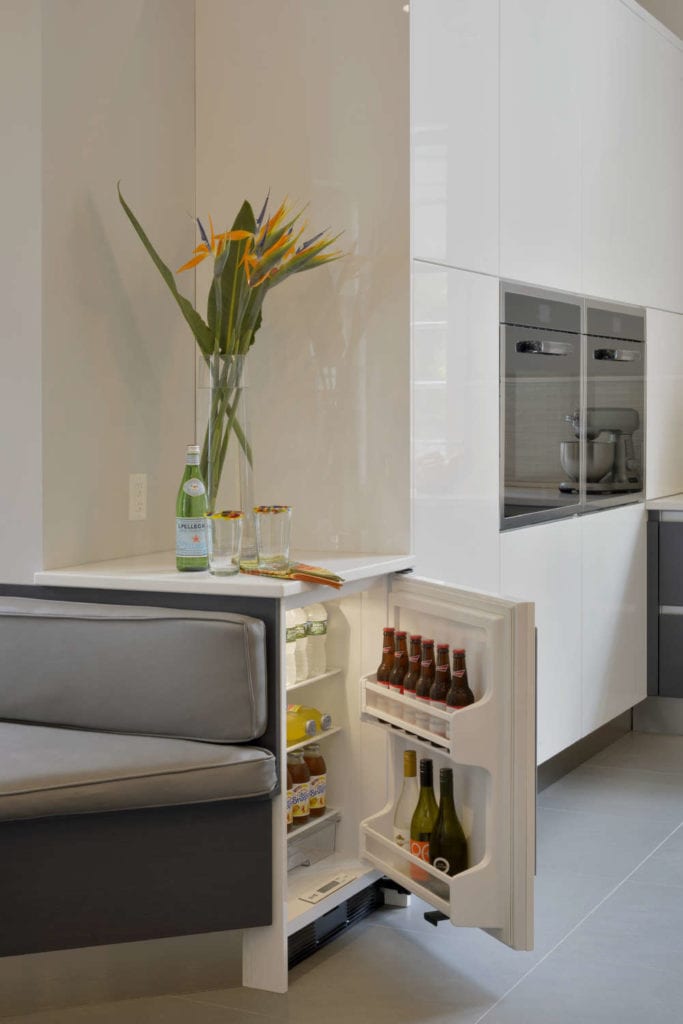
It seems counter-intuitive that an additional electric appliance would conserve energy instead of consume more of it. But Aston refutes that assumption with some compelling arguments. Do you know what happens when your large refrigerator is opened, closed, opened, closed, opened, closed all day long? Your compressor is sent into overdrive as it attempts to maintain an ideal cooling temperature. If you can keep the refrigerator shut for longer periods of time, it will extend the life of your appliance, reduce repairs (most refrigerator repairs are compressor related), and cut down on energy usage, since an undercounter unit draws about half the electricity as that 48” monster.

The other advantage to limiting access to the main fridge is that your food stays fresher longer. How so? Because, when the refrigerator temperature rises due to an open door (especially if you have family members who open the door and just stand there contemplating the contents!), your food spoils faster.
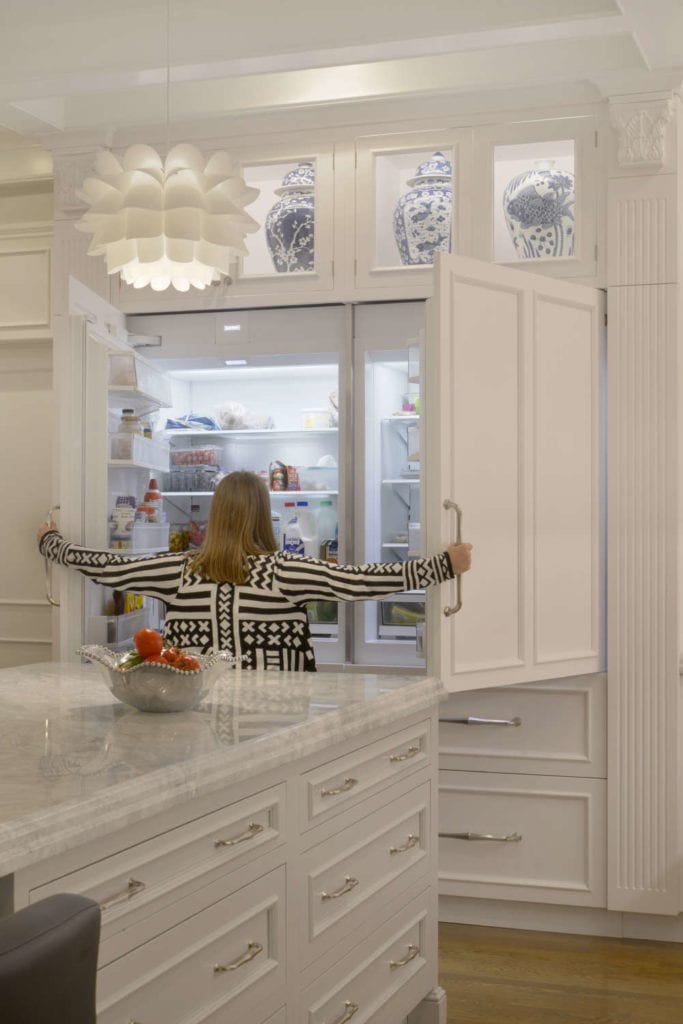
So now those refrigerator drawers go from being a non-essential luxury extravagance to a practical eco-friendly choice that reduces food waste, electricity consumption, and premature appliance failure.
(And have you been to your local garbage dump lately and seen how many refrigerators have been abandoned there?) You will have contributed to the environment, and lightened the load on your wallet for utility and grocery bills. Oh, and guess what Aston’s final tip was for thinking green when designing your new kitchen? To consider donating your old kitchen to a worthwhile charity, such as Sustainability Angel.
So, you see, you don’t have to go to such extremes as installing solar panels on your roof or digging up your property for a geothermal energy system in order to have a more environmentally-friendly kitchen renovation. It may be as easy as making a few small green choices and changes of habit. Evidently, Kermit was terribly wrong.
###
In March 2019, Bilotta Kitchens was awarded for their achievement in recycling luxury kitchens for over 10 years.
This post was written by senior designer, Paulette Gambacorta. Paulette has been designing kitchens with Bilotta for over 25 years.
